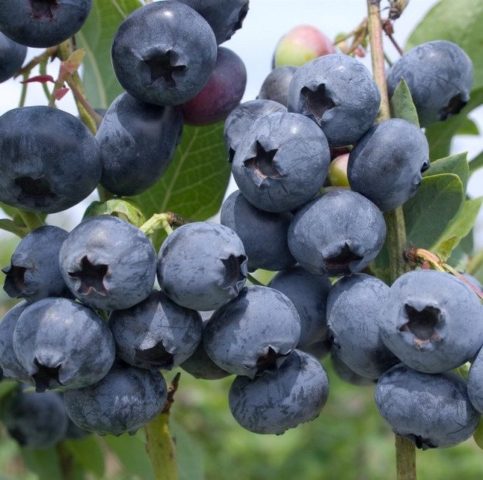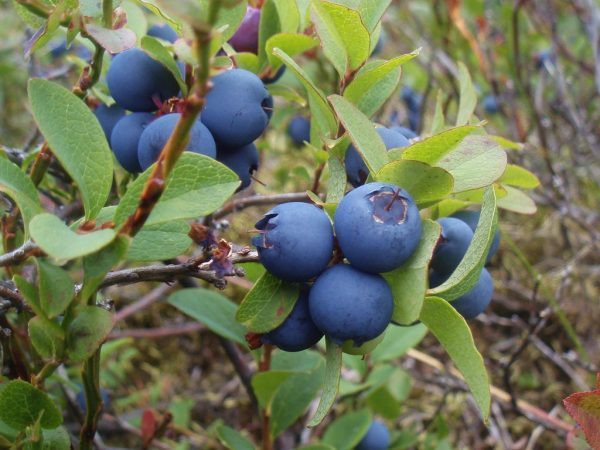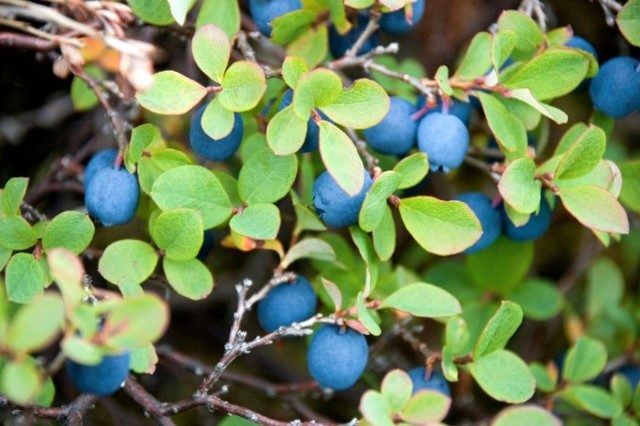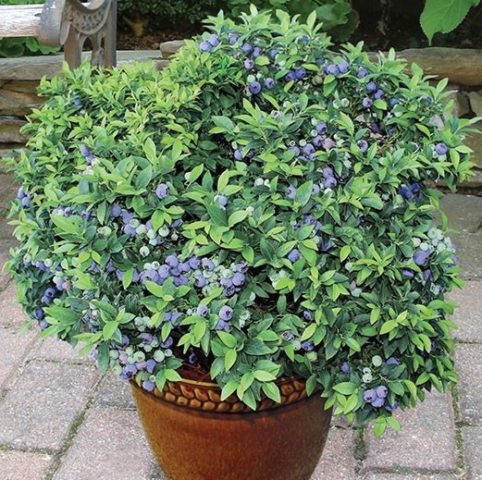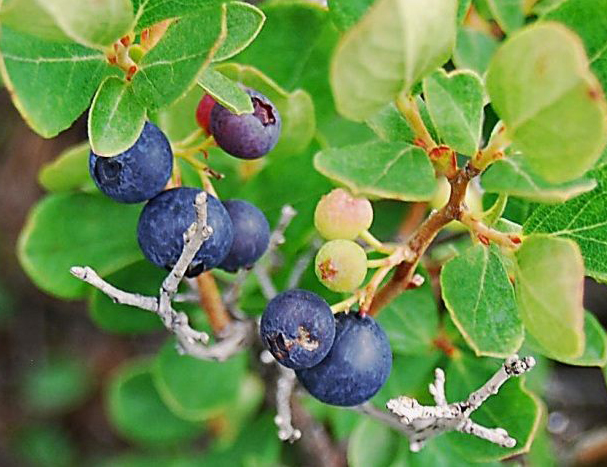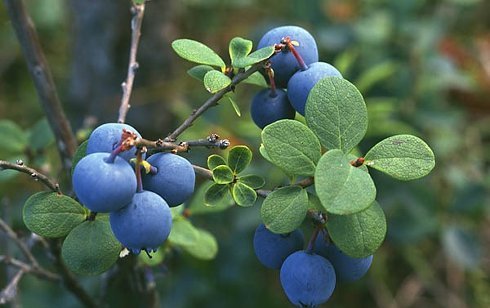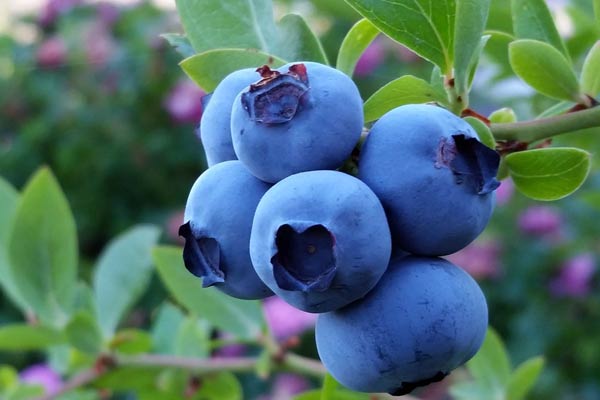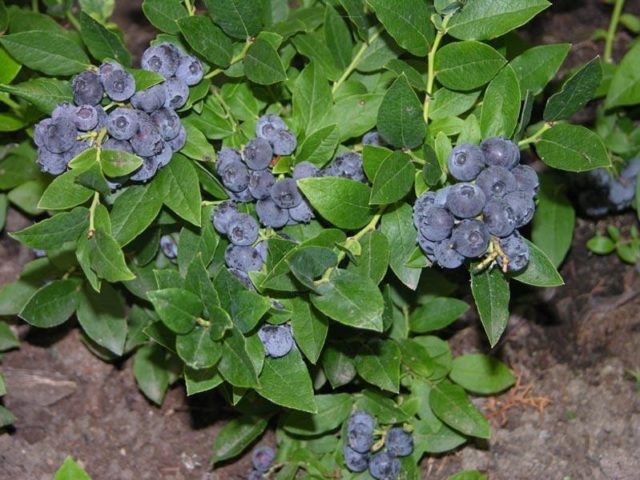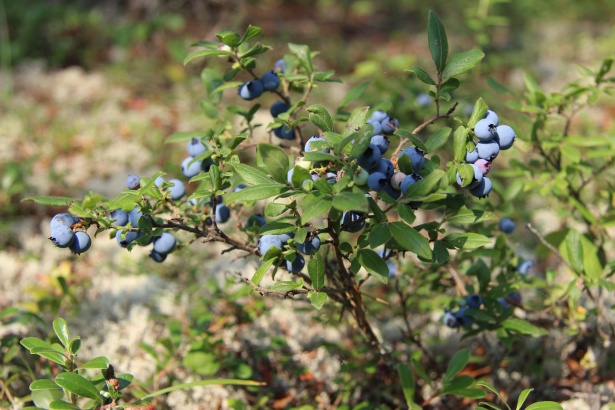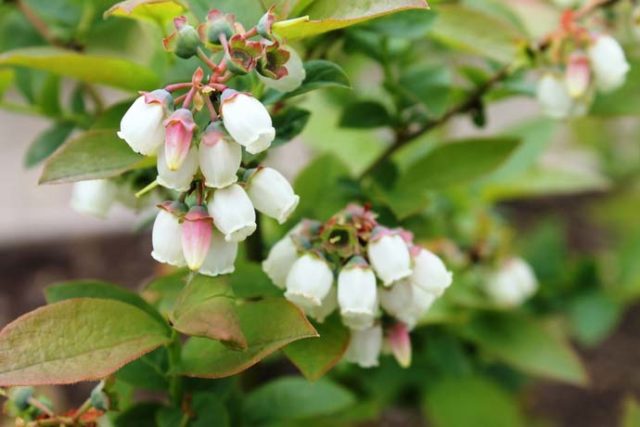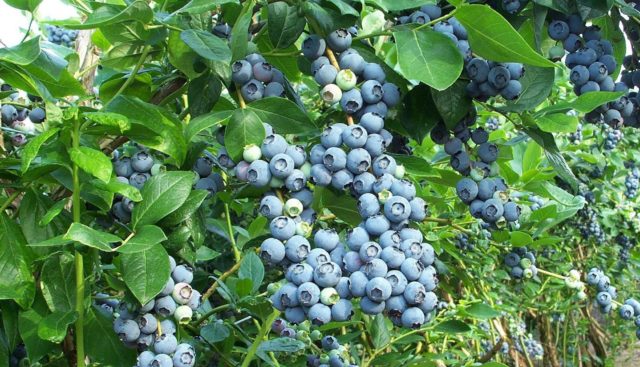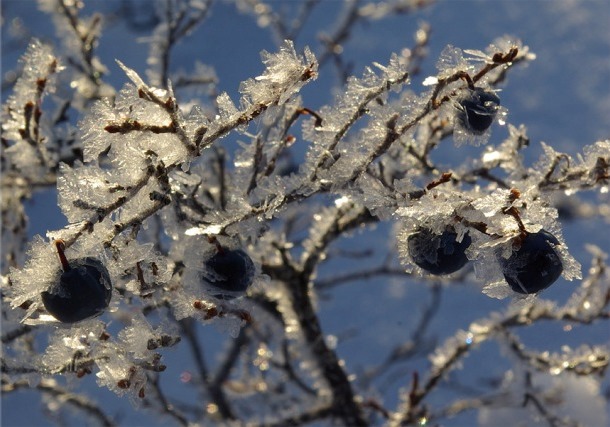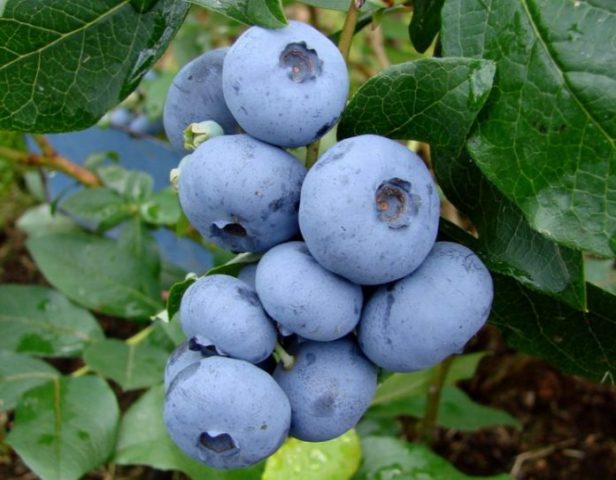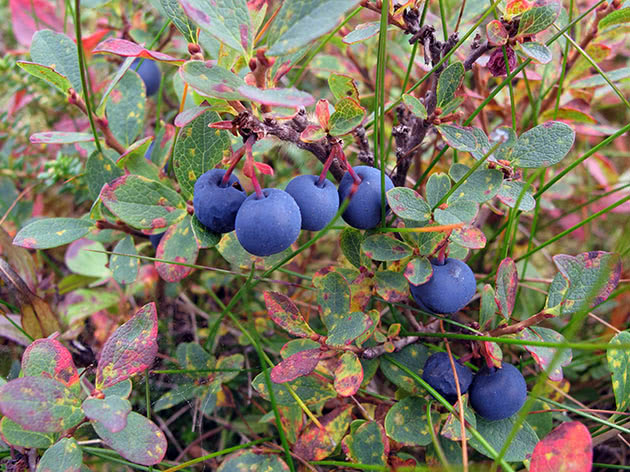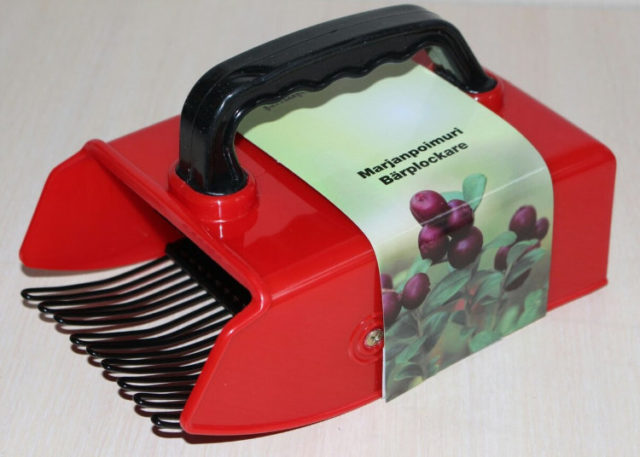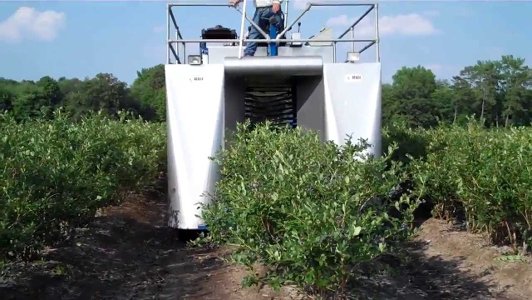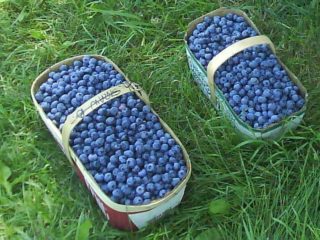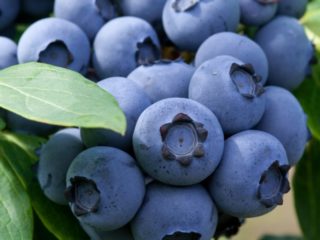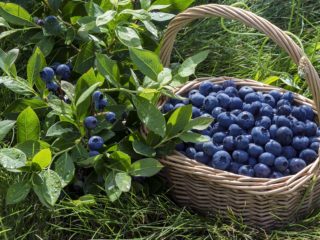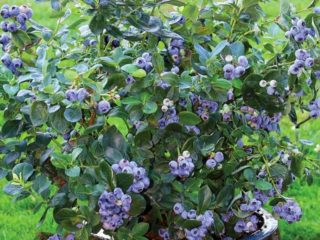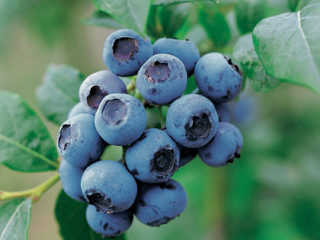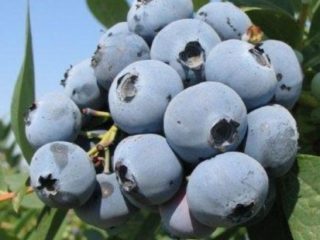Content
- 1 General description of blueberries
- 2 When do blueberries begin to bear fruit?
- 3 When and how are blueberries harvested?
- 4 What can you make from blueberries?
- 5 Conclusion
Blueberries are a perennial berry plant of the Vaccinium (lingonberry) genus, of the Ericaceae family. Other names for the species are also common in Russia: blueberry, water drinker, gonobobel, fool, drunkard, sinika, lokhina, tibunitsa. Blueberries grow in the wild; they are grown in small garden plots, as well as in specialized farms on an industrial scale. Next, a description of the common blueberry and other varieties of the crop will be given.
General description of blueberries
Blueberries are close to other fruit and berry crops of the Vaccinium genus - lingonberries, cranberries, blueberries.These are shrubs, semi-shrubs and shrubs with erect or creeping branches, creeping rhizomes, juicy blue berries, the life span of the plant is 90-100 years.
Origin of blueberries
According to scientific research, the lingonberry family has ancient origins. Fossil remains of some species, including blue tits, were found in continental sediments dating back to the Tertiary period of the Cenozoic era - 63 million years BC. The genus was distributed in western Europe, Africa, North and South America, and Asia. Subsequently, it migrated and changed, adapting to new climatic conditions during growth.
Why are blueberries called blueberries?
The Russian name “blueberry” comes from the color of the berries. They are very similar to blueberries, but are lighter in color and do not contain coloring juice. Interestingly, in English the word “blueberry” also refers to blueberries and lingonberries.
Varieties
There are about 200 types of crops in the world, including industrial varieties and hybrids. The most common of them are:
- Blueberry, or common blueberry (Vaccinium uliginosum) is the most common species in Eurasia and North America. The bushes have a height of 30-90 cm. The densely branched root system is located in the top layer of soil. The plant produces short underground shoots, from which new above-ground shoots grow, forming a bush.
- Wild blueberry or gonobobel - a shrub up to 50 cm, with bluish-blue, obovate leaves, white or pink flowers, round or pear-shaped berries. It grows in deciduous and coniferous forests, mountain and shrub tundras, near peat bogs. The range covers the middle zone, the Far East, the Urals, Siberia and the Caucasus.
- Volcanic Vaccinium vulcanorum - an oceanic species found in Kamchatka, in the Magadan region, along the entire coast of the Sea of Okhotsk up to Cape Dezhnev. Grows on volcanic plateaus, scree, fine gravel, deciduous woodlands, meadow tundra. A small shrub up to 15 cm tall with prostrate or erect shoots. A characteristic difference is the presence of last year’s withered leaves on the bush. The berries ripen in late August or early September.
- Narrow-leaved (Vaccinium angustifolium) is a low-growing bush, 5-70 cm, with rounded serrated leaves, cylindrical white flowers, small bright blue berries. It grows in the mountains of eastern Canada, in the northwestern United States, and is found on rocky soils and the edges of swamps. The shoots grow at an angle to the surface of the earth, which allows the plant to hide even under a small layer of snow and survive harsh winters. Easily withstands the vagaries of weather. The yield per bush reaches 1.5 kg. The berries ripen early - in late June or early July.
- Tall or shield (Vaccinium corymbosum) – characterized by variability of characteristics. The height of the bush is 1-4 m, the shoots are slightly ribbed, the leaves are large, shiny, smooth. The flowers are white or pale pink, the berries are large, the colors vary from blue to black. Distributed in wetlands and rainforests of the United States.
- Ashy blueberry, or twig blueberry, or Rabbit's eye (Vaccinium ashei), is common in the southeastern United States. Reaches 9 m in height, thanks to the abundant root growth it forms dense thickets. Heat-loving, tolerates drought and heat well. Small berries are inferior in taste to other species and cultivated varieties.
- South (Vaccinium australe small) – bushes from 1 to 3 m in height, leaves are large, entire or serrated, elliptical in shape. The shoots are slightly ribbed, light brown or red. Flowers are white, berries are blue. It grows mainly on the Atlantic coast of North America.
Garden blueberries (Vacciniumcorymbosum) unite more than fifty cultivated varieties bred in the twentieth century by crossing wild varieties:
- Canadian;
- southern;
- Ashy;
- tall species native to the United States.
Shrubs of various garden varieties grow up to 2-4 m in height, are characterized by high productivity, berries appear 2-5 years after planting. With proper care, garden varieties bear fruit abundantly for 30 years.
What blueberries look like
Blueberry is a highly branched deciduous shrub. Erect branches have a cylindrical shape. Young ones are green, mature ones are covered with brownish or dark gray bark. The leaves are small, 0.7-3 cm long, 0.4-2.4 cm wide, smooth, leathery, with purple glands, on short petioles. The shape varies from elliptical to lanceolate. The leaves can be blunt at the end or pointed, sometimes with slightly curved edges. They are dark green above, lighter below, covered with a bluish waxy coating. The berries are spherical, pear-shaped or oblong, 9-12 mm in diameter, thin-skinned. The color can be blue, dark blue, black with a bluish waxy coating.The greenish fleshy juicy pulp of the berries has a pleasant sweet-sour or sugary-sweet taste, contains 10-13 small light brown seeds located in 4-5 multi-seeded nests.
How blueberries grow
Under natural conditions, blueberries grow in the tundra zone, on hummocks of swamps, in forests, and in the mountains. Adapts to a wide variety of soil and environmental conditions: it can grow on very poor soils, in wetlands and relatively dry places. It tolerates low light well, but bears fruit better in sunny areas. In garden plots it is planted in well-lit, sheltered from the wind places, on acidic soils.
How blueberries grow in the forest is shown in the photo:
Where blueberries grow in Russia and in the world
In Russia, blueberries grow almost everywhere; on the map, the boundaries of its range cover the territories of the Far East, Primorye, Sakhalin, the Caucasus, the Kuril Islands, Eastern and Western Siberia, and the non-black earth strip of the European part of the country (north and middle zone). Typical places of growth are moss bogs, peat bogs, banks of streams, lakes and rivers. Berry bushes can grow in the tundra, in the mountains, and form undergrowth in swampy mixed and coniferous forests. It occupies a vast range covering Europe, Mongolia, China, Korea, Japan, North America and eastern Canada. Industrial cultivation of the crop annually expands the range of the species, including the subtropical regions of New Zealand, Central Asia, Africa, Australia, Mexico, and Madagascar.
How blueberries bloom
Blueberry flowers - drooping, solitary or collected in inflorescences of 2-3 pieces, are formed at the tops of annual shoots.The pedicels are long, the bracts are uneven, filmy, greenish. Small white or pale pink flowers are pitcher-bell-shaped and have a corolla with a bend of 4-5 short blunt teeth. The calyxes consist of 4-5 rounded sepals. The shrub blooms in temperate latitudes in May-June, in the tundra in July-August for 10 days. The berries ripen 1.5 months after flowering.
A few facts about garden blueberries
Garden blueberries in Russia are often called garden blueberries or blueberry trees. All garden varieties are native to North America - the eastern USA and Canada. Work on domestication of wild tall varieties began in the 1900s. Currently, in the United States, about 1000 hectares are allocated for the cultivation of highly productive plant varieties; agricultural cultivation techniques and methods for combating diseases and pests have been developed. Cultivation of garden varietal blueberries requires some knowledge; it should be borne in mind that they:
- very demanding on soil and lighting;
- has high resistance to drought, frost, diseases and pests;
- the average yield is about 10 kg of berries per bush;
- needs generous watering and regular fertilizing throughout the entire growth period;
- bears fruit in clusters of 5-12 berries;
- to obtain large, high-quality fruits, it is necessary to carry out rejuvenating pruning every 8-10 years;
- an important distinguishing feature is the friendly yield of the harvest;
Berries from blueberries grown on plantations are collected both manually and with the help of special devices.
Description of garden blueberries
Garden or American blueberry is a perennial deciduous shrub, 2-4 m in height and crown diameter. It does not form underground shoots; apical young shoots are formed on last year's growth. The leaves of garden varieties are large, oval, smooth, dark green in spring, scarlet in autumn. The berries are colored in various shades of blue, round, flattened, sometimes pentagonal. The fruit pulp is juicy, white, and tastes sweeter than that of wild species.
Frost resistance of blueberries
Blueberry is a relatively frost-resistant plant. The lower the bush, the better it tolerates negative temperatures. Frosts down to -45˚C do not harm wild-growing varieties with sufficient snow cover. Garden crops are less adapted to cold weather; frost resistance indicators vary depending on the variety. Semi-high varieties can withstand frosts down to - 35 ˚С, high varieties - up to - 25 ˚С. Frosts in snowless winters pose a danger to the plant, so bushes of garden varieties must be covered at temperatures below zero.
Are blueberries self-pollinating or not?
Blueberries are self-fertile plants and require cross-pollination. Several bushes should be planted on the site at the same time. Pollinators are insects - bees, bumblebees, butterflies, ants. Many garden hybrids are self-pollinating plants, but cross-pollination increases the yield of the bush and the quality of the berries.
What plants are blueberries friendly with?
Blueberries can easily tolerate any neighborhood. Next to it, it is favorable to plant plants that also prefer to grow in acidic soils - cranberries, barberries, blueberries, lingonberries, cherries. Good neighbors are conifers, heathers, birch, oak, alder, wild rosemary.Most often, several berry bushes of the same variety are planted nearby. It is preferable to plant herbaceous plants next to garden blueberries that will not shade the bush.
When do blueberries begin to bear fruit?
Wild blueberry species begin to bloom and bear fruit annually at the age of 11-18 years. From one bush you can collect up to 200 g of berries. When grown in garden conditions, the plant begins to bear fruit in 4-5 years and produces up to 1 kg of berries per bush.
When do blueberries bear fruit?
Garden blueberries begin to bear fruit 2-4 years after planting. The ripening time of berries depends on the variety:
- early ripening - July;
- mid-season – July-August;
- late - end of August and September.
When do wild blueberries ripen?
Under natural conditions, the berry ripens 40-50 days after flowering - at the end of July and at the beginning of August. Wild blueberries do not ripen smoothly; this process takes 2-3 weeks. The suitability of fruits for harvesting is determined by their sweetness. Immediately after coloring, the berries do not yet have good taste. After a week, the sugar content in the pulp increases, and the weight of the fruit increases.
When and how are blueberries harvested?
Blueberries ripen in the second half of July and begin to be collected after 1 week. Unripe fruits have sufficient density for transportation, but do not have a harmonious taste. At the same time, it is important not to be late in picking the berries: when they are overripe, they fall from the branches at the slightest touch. In addition, they become very fragile and are easily damaged. Blueberries are collected in dry weather and removed from the branches carefully, trying not to shake them.Picking berries immediately after rain greatly reduces their shelf life; after 2 days a fungal coating may form on them.
Blueberry harvest time
The blueberry harvest begins in August. In the Moscow region and the central zone, the harvest begins in the first ten days of the month, in cold regions - from the second half. The berries on the bush ripen gradually and are removed from the branches before frost. The fruits are collected in several stages by hand or using a special comb (scoop).
Picking blueberries by hand
It is best to pick blueberries without using any equipment. The manual harvesting method involves minimal damage to the berries and branches. Its main drawback is low productivity. When picking, the berries must be removed immediately directly into specially prepared containers, which are placed under the bunch. Hands should be washed well before collecting.
Blueberry picking equipment
In small garden plots or in the forest, a scoop with a comb is used to collect blueberries. This simple device allows you to speed up the process 3-4 times. It can be bought or made. The branches pass through the teeth freely without being damaged, and the berries, in turn, fall into the scoop.
For harvesting blueberries on an industrial scale, the mechanized method is more relevant. On large plantations, special equipment is used to collect, clean, sort and package berries.
What can you make from blueberries?
Blueberries are a berry with a pleasant taste, widely used for preparing a variety of alcoholic and non-alcoholic drinks, confectionery, and desserts. Jams, jellies, and sweet syrups are made from it. Medicinal infusions are prepared from berries, shoots and leaves. Blueberry is used for diseases of the stomach and pancreas, and for pathologies of the heart, blood and blood vessels. Regular consumption of blueberries helps reduce blood pressure and sugar levels, improve intestinal motility, and saturate the body with vitamins. The fruits contain vitamins, micro- and macroelements, antioxidants and anthocyanins, which makes the product invaluable for dietary, therapeutic and restorative nutrition.
Conclusion
Blueberries grow almost all over the world. Its beautiful blue berries are tasty, healthy and beautiful. Garden varieties are heat-loving, high-yielding, and look decorative in any landscape composition. For many people, picking wild berries is a pleasant pastime and a useful relaxation. Every year in Russia, growing varietal blueberries on private plots and in garden farms is becoming more and more popular.
